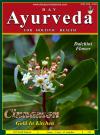Karela (Momordica charantia) is an herb known worldwide for its well-known results in diabetes mellitus. A wonder of nature is that, it is not only beneficial in diabetes mellitus but is also very beneficial in many other disorders that have been troubling mankind, Karela is commonly grown everywhere herb of India.
It is generally found in places, which are damp and wet. It is a creeper and it climbs on other trees for supports. Generally whole plant is used but some people in India also uses outer layer of the fruit. Karela is hot in potency, and possess light and dry properties. It possesses Bitter and astringent tastes. Karela’s chemical constituents are lectin, charatin and momordicine. It also contains a polypeptide named gurmarin, which is similar to insulin in composition. Exact action is still unknown but it is well established that regular use of Karela has very good results in diseases like diabetes etc
Bitter gourd is an appetite stimulant. Hence it is used in the treatment of anorexia, a disorder in which a person is unable to eat the required amount of food.
Bitter gourd is used as a blood purifier due to its bitter tonic properties. It can heal boils and other blood related problems that show up on the skin. For treatment, a cupful of the juice of the bitter gourd must be taken each day in the morning, with a teaspoon of the juice of the citrus lemon in it.
Bitter gourd has a host of bitter chemicals in which, which are hypoglycemic in action, it has at least one substance that is like the insulin secreted by the human pancreatic glands. Hence, bitter gourd is extremely effective in the treatment of diabetes mellitus.
For diarrhea, the juice of a bitter gourd is mixed with the juice of the spring onions and lemon is given to the patient twice a day. This remedy is also effective in curing the diarrhea that is caused due to cholera.
The juice of the bitter gourd is excellent remedy for hangovers. It is also very beneficial in preventing the liver damage that occurs due to excessive alcoholism.
In case of piles, the fresh juice of bitter gourds is prescribed to the patient with positive results. Three teaspoons of juice of the bitter gourd leaves is to be extracted each morning, added to a glassful of buttermilk and then consumed on an empty stomach.
Pyorrhea is bleeding from the gums. Including bitter gourd in the daily diet or having some of its juice every morning on an empty stomach helps to reduce this problem.
It contains Gurmarin, a polypeptide considered to be similar to bovine insulin, which has been shown in experimental studies to achieve a positive sugar regulating effect by suppressing the neural response to sweet taste stimuli.
Bitter gourd principle constituents are lectins, charantin and momordicine. The fruits have long been used in India as a folk remedy for diabetes mellitus. Lectins from the bitter gourd have shown significant lipolytic and lipogenic activities. The fruits and leaves of the plant contain two alkaloids, one of them being momordicine. The plant is reported to contain a glucoside, a saponin-like substance, a resin with an unpleasant taste, an aromatic volatile oil and a mucilage. The seeds contain an alkaloid and an anthelmintic principle in the germ; they also contain urease.
Bitter gourd being rich in all the essential vitamins & minerals especially vitamin A, B1, B2, C and Iron, its regular use helps to prevent many complications such as hypertension, eye complications, neuritis and defective metabolism of carbohydrates. Rich in iron, bitter gourd has twice the beta carotene of broccoli, twice the calcium of spinach, twice the potassium of bananas, and contains vitamins C and B 1 to 3, phosphorus and good dietary fiber. It increases body’s resistance against infection.
Bitter gourd is a highly beneficial help in the treatment of blood disorders like blood boils, scabies, itching, psoriasis, ring-worm and other fungal diseases.
Helps achieve positive sugar regulating effect by suppressing the neural response to sweet taste stimuli, helpful in Diabetes Mellitus. Lectins from bitter gourd have shown significant antilipolytic and lipogenic activities. It is useful as an emetic, purgative, as an anti-helmminthic, in piles, leprosy, and jaundice.
Recent researches by a team of British doctors have established that it contains a hypoglycaemic or insulin-like principle, designated as ’plant-insulin’, which has been found highly beneficial in lowering the blood and urine sugar levels. It should, therefore, be included liberally in the diet of the diabetic.
The multiple controlled clinical studies have confirmed the advantage of the bitter gourd for people with diabetes type-II If taking with other anti-diabetic medications, please monitor your blood sugar levels closely as there is a risk of blood sugar levels dropping below normal.






 Dec 2024
Dec 2024
 May 2024
May 2024
 September 2022
September 2022
 April 2022
April 2022
 October 2020
October 2020
 Jan 2020
Jan 2020
 June 2019
June 2019
 January-February 2019
January-February 2019
 Augest-September
Augest-September
 April 2018
April 2018
 November 2017
November 2017
 June 2017
June 2017
 November 2016
November 2016
 September 2015
September 2015
 March 2015
March 2015
 July 2014
July 2014
 January 2014
January 2014
 July2013
July2013
 March 2013
March 2013
 May 2012
May 2012
 May 2011
May 2011
 Sep 2010
Sep 2010
 Jun 2010
Jun 2010
 Feb 2010
Feb 2010
 December 2009
December 2009
 August 2009
August 2009
 June 2009
June 2009
 Feb 2009
Feb 2009
 December 2008
December 2008
 October 2008
October 2008
 March 2008
March 2008
 July 2008
July 2008
 May 2008
May 2008